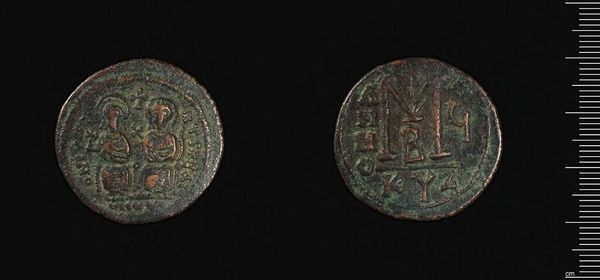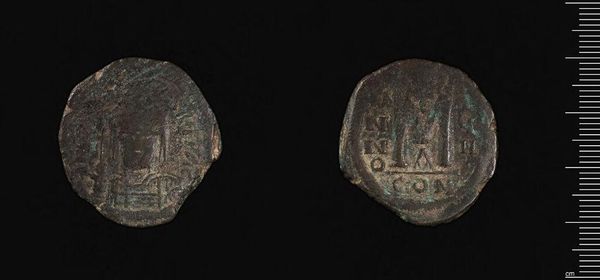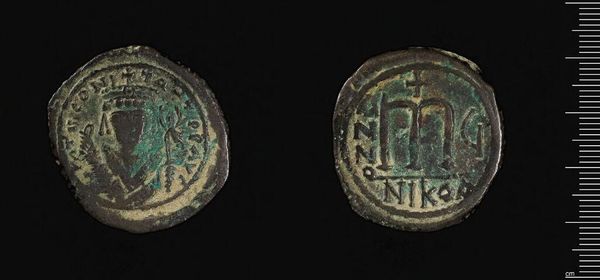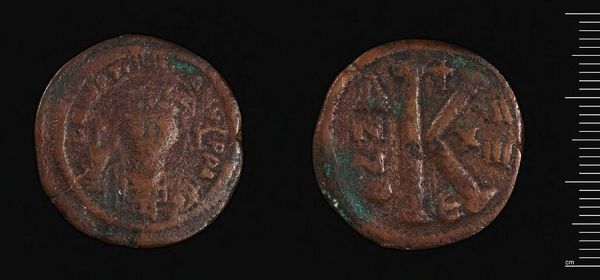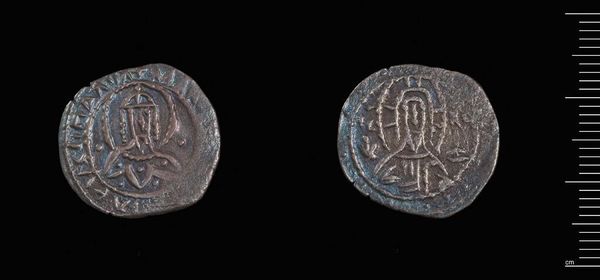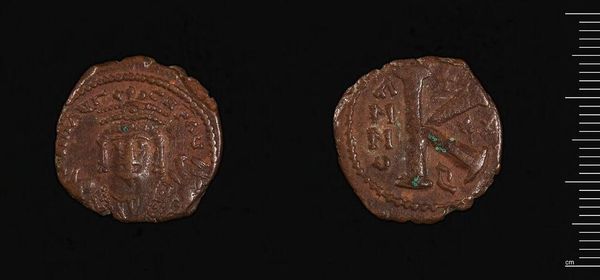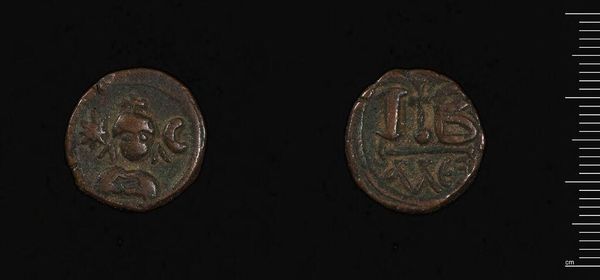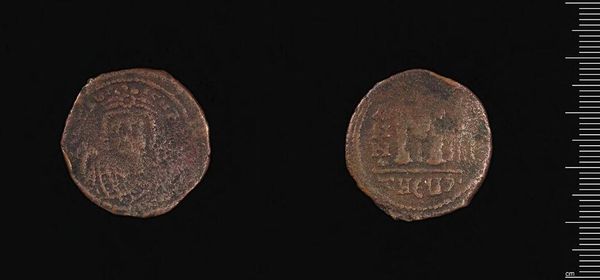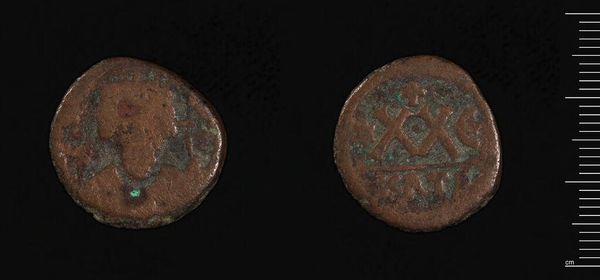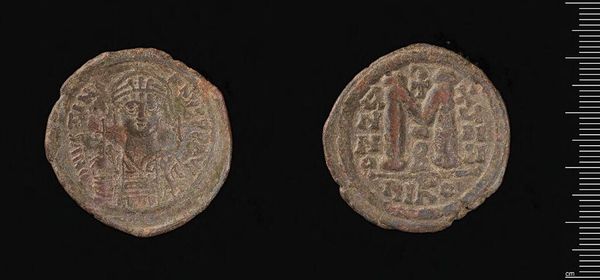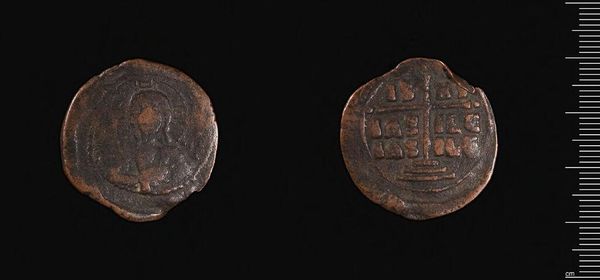
Coin of Maurice Tiberius c. 587 - 588
Dimensions: 12.9 g
Copyright: CC0 1.0
This is a copper coin of Maurice Tiberius, who ruled the Byzantine Empire from 582 to 602 AD. Its form is quite simple, yet its material and manufacture speak volumes. While we don't know the exact mint where it was made, we can assume a team of specialized artisans were involved. The metal would have been smelted and refined, then heated and hammered into a thin sheet. A circular blank would be cut, and placed between two dies—hardened metal blocks engraved with the image and text. With a swift hammer blow, the design would be imprinted. The coin's images are fascinating, with the emperor's portrait on one side, and a symbolic representation of power on the other. But the coin also speaks to larger social and economic networks, and the labor needed to transform raw materials into a functioning currency, and the very essence of money itself. It is an object produced through specialized labor, shaped by political and economic forces. Considering the coin through the lens of material and making allows us to recognize the complex historical context from which it comes. It's a reminder that even the smallest objects can tell big stories.
Comments
No comments
Be the first to comment and join the conversation on the ultimate creative platform.
